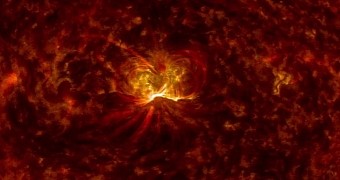Earlier this week, the Sun threw quite a fit. Long story short, powerful storms on its surface fired two flares our way.
These flares were documented on September 8 and 10, and should reach our planet sometime between September 11 and 12, Space informs.
Just yesterday, NASA released a video of the flare recorded only a couple of days ago. The footage is available below. This flare was an X1.6 class one. This means that, although intense, it was not the best our Sun can do.
For those unaware, such flares are basically powerful bursts of radiation. Now, before you go running to build yourself a bunker, you should know that radiation originating from such flares cannot make it through our planet's atmosphere.
In a nutshell, all this space drama will not in any way harm humans. However, GPS and telecommunication signals are likely to be affected, simply because they travel in a layer of the atmosphere that the flares can reach.
On the bright side, it appears that, although they are likely to disturb GPS and telecommunication systems, the flares will more than make up for it by putting on a light show.
Specifically, researchers expect that these bursts of radiation will amplify the auroras visible to those living in our planet's northern latitudes.

 14 DAY TRIAL //
14 DAY TRIAL // 